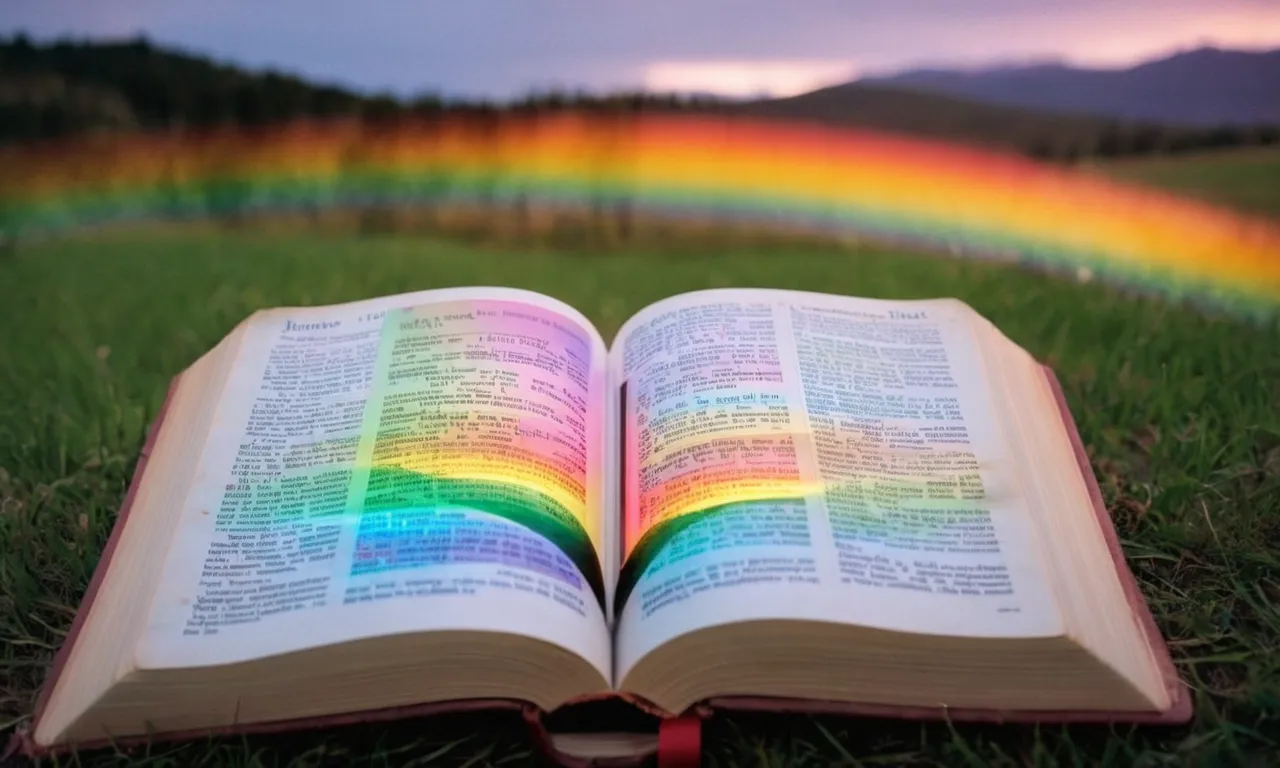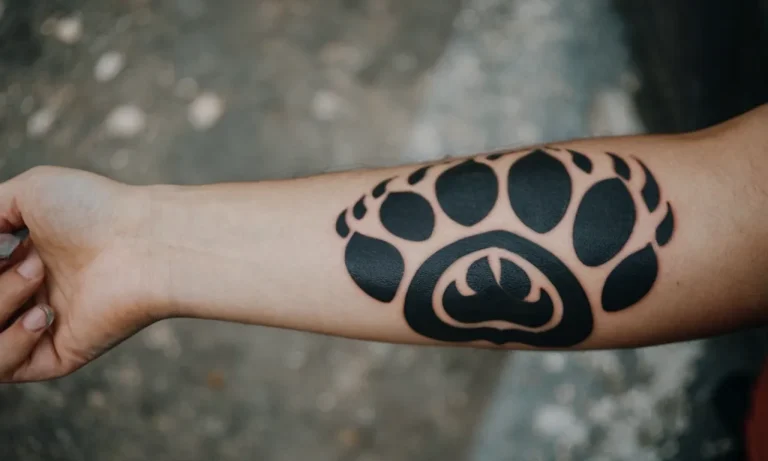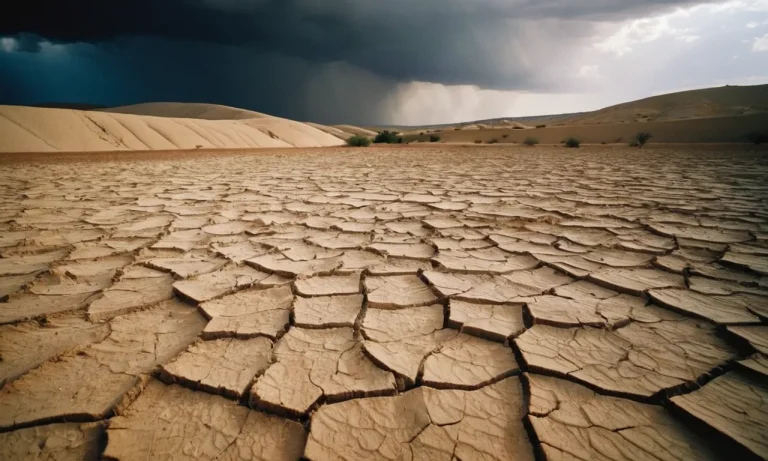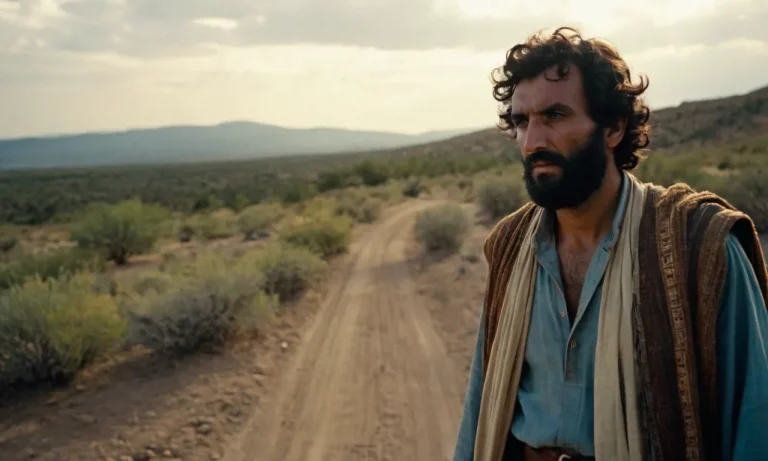How Many Times Is ‘Rainbow’ Mentioned In The Bible?
The rainbow is a beautiful and mysterious natural phenomenon that has captivated humankind since the dawn of civilization. With its majestic arc of color spanning the sky, it’s no wonder that rainbows are deeply woven into legends, myths, and religious texts across many cultures.
For people of faith, the rainbow holds special spiritual significance.
If you’re short on time, here’s a quick answer to your question: the word ‘rainbow’ appears 13 times in the Bible.
In this comprehensive article, we will explore the rainbow’s symbolic meanings in the Bible and do a deep dive into each instance where the rainbow is referenced in order to understand the rich biblical context surrounding this meteorological wonder.
The Rainbow as a Sign from God
The Rainbow in the Story of Noah’s Ark
The first and most well-known mention of the rainbow in the Bible is in the story of Noah’s Ark in Genesis 9. After the great flood, God makes a covenant with Noah that He will never again destroy the earth with a flood.
God says, “I have set my rainbow in the clouds, and it will be the sign of the covenant between me and the earth” (Genesis 9:13). The rainbow serves as a reminder of God’s promise to never again send a destructive flood.
The Rainbow as a Sign of God’s Covenant
Throughout the Bible, the rainbow is portrayed as a sign of God’s covenant and faithfulness. In Ezekiel 1:28, the prophet Ezekiel describes seeing “what looked like the glow of a rainbow” surrounding God’s throne, representing His glory and divinity.
Additionally, Revelation 4:3 describes a rainbow around the throne in John’s vision of heaven, again symbolizing God’s mercy, grace, and promises.
The Rainbow in the Book of Revelation
The final mention of the rainbow in Scripture comes at the end of the Bible in Revelation 10:1. John sees “another mighty angel coming down from heaven. He was robed in a cloud, with a rainbow above his head; his face was like the sun, and his legs were like fiery pillars.”
Some biblical scholars believe this rainbow could represent God’s faithfulness in fulfilling all His promises to mankind.
Complete List of Bible Verses Mentioning the Rainbow
Old Testament Verses
The rainbow is mentioned several times in the Old Testament, always in the context of God’s covenant with Noah after the flood. Here are the key verses:
The rainbow stands as a powerful symbol of God’s faithfulness and mercy. He could have wiped out humanity entirely after their sin, but instead gave them another chance. The rainbow reminds us that even in judgment, God remembers mercy.
New Testament Verses
There are no direct mentions of the rainbow in the New Testament. However, the book of Revelation uses rainbow imagery in describing the glory, majesty and faithfulness of God:
Though not explicitly mentioning the Noahic covenant, these passages use the rainbow as a symbol of God’s glory and sovereignty. The rainbow points to the majesty and awe of the Lord who reigns over all creation.
The Rainbow in Ancient Religious Symbolism
Rainbows in Mesopotamian Mythology
In ancient Mesopotamian mythology, the rainbow was seen as a symbol of divine connection between gods and humans. The ancient Sumerians believed the rainbow was the necklace of the fertility goddess Inanna.
Some myths tell of the rainbow being used as a heavenly bridge between the earthly realm of humans and the divine realm of the gods. The rainbow served as a message from the gods and a reminder of their blessings over the land.
Ancient Mesopotamian art often depicts the rainbow in scenes related to agriculture, fertility, and abundance.
Rainbows in Greek and Roman Mythology
In Greek mythology, the rainbow was seen as a path traveled by the messenger goddess Iris. As an envoy for the gods, Iris moved between realms on the arc of a rainbow to deliver divine missives from the gods to humans on earth.
The ancient Romans later adopted Iris into their pantheon of gods, where she served a similar role. Her movements on the rainbow were considered an omen of coming messages from the gods. The rainbow was sometimes referred to as “Iris’ bow.”
In Greek pottery and friezes, Iris is often depicted running or flying along a rainbow.
Rainbows in Celtic and Norse Legends
In ancient Celtic legends, the rainbow was seen as a bridge to the otherworld, the mythological realm inhabited by fairies, magical creatures, and gods. It was considered an ominous sign if you pointed at a rainbow, lest it whisk you away to the otherworld.
In Norse mythology, the rainbow was seen as a bridge connecting earth to Asgard, the home of the gods. The Bifrost Bridge was a flaming rainbow that gods used to travel between realms. The presence of a rainbow bridge signified the gods looking down upon the earth.
Both cultures considered the rainbow a symbol of divine connections and intervention in human affairs.
Theological Symbolism of the Rainbow
The Rainbow as a Sign of God’s Mercy and Forgiveness
In the Bible, the rainbow is first mentioned in Genesis 9 after the Flood. God puts the rainbow in the sky as a sign of His covenant with Noah that He would never again destroy all life with a flood. As such, the rainbow represents God’s mercy, grace, and forgiveness towards humanity despite their sinful ways.
The rainbow reminds us that even when humans turn away from God, He remains loving and forgiving. Just as the rainbow appears after the storm passes, God’s mercy and forgiveness come after His judgment.
The beautiful colors of the rainbow symbolize the new beginning and restoration that comes through God’s compassion.
The Rainbow as a Symbol of Hope and Promise
Because the rainbow appeared after the destruction of the Flood, it gave Noah hope of a fresh start under God’s protection and care. More broadly, it has come to represent God’s commitment to preserve the world He created.
The vibrancy and variety of colors in a rainbow inspire feelings of optimism, joy, and faith in God’s promises. When we see a rainbow, we’re reminded that no matter how gloomy things may seem, there are always brighter days ahead with God’s help.
The Rainbow as a Symbol of Covenant and Relationship with God
In Genesis 9:12-17, God specifically links the rainbow with the covenant He makes with Noah and his descendants and every living creature. It serves as a sign of God’s pledge to sustain life on earth despite people’s tendency to sin.
The rainbow symbolizes the special relationship and faithfulness God extends to His creation across generations. It reminds believers today of God’s continuous covenants and connections with His people throughout history.
As a vibrant bridge arching across the sky, the rainbow represents God reaching out to humanity by binding Himself in a solemn oath.
The Rainbow in Modern Culture and Spirituality
The Rainbow Flag in LGBTQ Culture
The rainbow flag has become a universally recognized symbol of LGBTQ pride and diversity since its debut in 1978 at San Francisco’s Gay Freedom Day parade. Originally designed by artist Gilbert Baker with eight colored stripes, each had a different meaning – hot pink for sex, red for life, orange for healing, yellow for sunlight, green for nature, turquoise for art, indigo for harmony, and violet for spirit.
Over the years, the flag has undergone some changes in the number and colors of stripes, settling on the now familiar six stripe version with red, orange, yellow, green, blue and violet. These colors symbolize life, healing, sunlight, nature, harmony and spirit – concepts important to the LGBTQ community.
Today, the rainbow pride flag is flown proudly during LGBTQ marches and festivals, hangs in gay bars and pride stores, and is displayed by supportive organizations and individuals, serving as an upbeat emblem of the diversity and visibility of lesbian, gay, bisexual, transgender, queer and questioning communities worldwide.
Rainbow Gatherings and New Age Spirituality
Rainbow Gatherings are temporary intentional communitiesorganized by groups of individuals who share an interest in alternative lifestyles, eco-consciousness, and hippie culture. They take their name from the idea of people with diverse beliefs coming together in nature, like the colors of a rainbow.
The first Rainbow Gathering was held in Colorado, United States in 1972. Attendees gather in remote nature locations to camp, share food, create art, meditate, enjoy music, and exchange ideas outside of mainstream society. Most follow the principles of leaving no trace when the gathering is over.
Unique rainbow culture has evolved at the camps like bartering and peacekeeping groups.
Though no official leaders or structure to the movement exist, word-of mouth, social media groups, and websites help participants self-organize the free annual gatherings, with attendance varying from 5,000 to 20,000. Critics consider Rainbows disorganized and claim issues like sanitation problems or uncontrolled drug use can emerge while proponents advocate the camps promote eco-awareness, conscious community, and personal growth through freedom.
Rainbows in Art, Media and Literature
Rainbows have an extensive history as a symbol in stories, songs, works of art, and pop culture for their association with hope, luck, wonder, spirituality, the natural beauty of light and rain, or imply the unattainability of finding a figurative “pot of gold.
“ Linked aesthetically to the theatricality of Judy Garland’s signature song “Somewhere Over the Rainbow,” references appear in both classic and modern entertainment narratives from The Wizard of Oz to children’s picture books to films like Disney/Pixar’s animated feature Inside Out.
Rainbow motifs additionally thrive in fashion, design, and visual arts, whether the neon vibrancy of Lisa Frank’s school supplies, the minimalist multi-stripe paintings of contemporary artist Daniel Buren, symmetrical Navajo textile patterns, or rainbow-colored transportation like Paul Frank’s iconic multicolored taxi.
Abstract rainbow art holds wide appeal for ability to fuse natural color wonder into creative works brimming with positive energy and warmth.
In a 21st century cultural landscape accelerating in technological over-saturation, this fundamental optical phenomenon continues providing enchanting visual shorthand for daydreams, promise, diversity, and imagination’s triumph over adversity across artistic mediums and genres.
Conclusion
Throughout history, across cultures and religions, the rainbow has maintained its wonder, mystery and spiritual symbolism. In the Bible, though infrequently mentioned, it appears at pivotal moments to convey God’s promise, mercy and judgment.
For people of faith today, the rainbow endures as a sign of divine blessing, covenant and hope. Whatever personal meaning we attach, rainbows continue to inspire awe and fill our imaginations with color.








